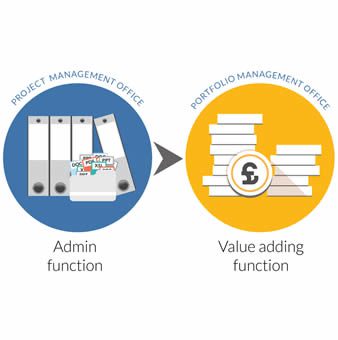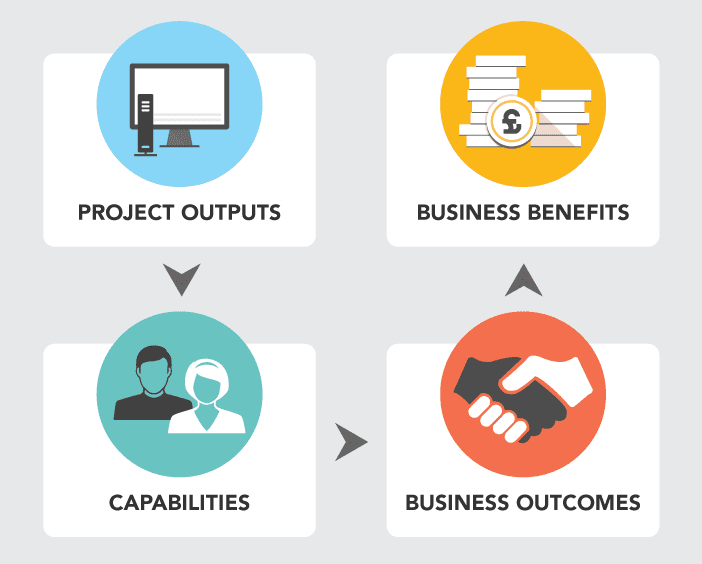David Walton
I’ve even seen these PMOs ‘tax’ – yes that is the word used – projects so they can fund the central PMO. These PMOS are often staffed with people who have never run projects or programmes, so they do not command respect from the project and programme community.

If you recognise your PMO in this description, then it is time you changed or transformed your PMO to the value adding type that delivers real benefit to your organisation.
To transform your PMO, you need to practice what you preach and treat the transformation as a project. There is no point in even starting to transform the PMO unless you have a business case and a committed sponsor.
The PMO should not in my view be funded by a tax on other projects as this causes resentment and requests like:
“Can the PMO take minutes of my weekly progress meeting?” Answer: No!
If you added up the cost of the annual portfolio and the expected benefits, then justifying a PMO that can identify early projects that are going off the rails, or ones that will not deliver their expected benefits is likely to be a relatively easy cost-benefit argument.
It is a fact that projects that should be terminated early are rarely terminated at the point where the business case is no longer valid. It is a rare project manager who stands up and says we should stop my project because the benefits no longer stack up.
The sponsor should also be saying this but both have a desire to keep the projects running. Sometimes they do not want the embarrassment of holding their hands up and recommending that the project is stopped. In reality, they should be applauded if they did as they are saving the organisation time and money. The PMO can offer an independent view of a project and challenge its existence if the business case becomes invalid.
I think that a better funding model is for the PMO to be funded centrally and not by a ‘project tax’.
Once you have gained agreement and backing from your sponsor that you need to transform your PMO, you need to develop a Target Operating Model (TOM). You also need to ensure that you understand the Current Operating Model (COM). To transform your PMO you need to define the path from the COM to the TOM.
The TOM can mean different things to different people, but I would keep it simple and think of the TOM in terms of:
For a value-adding PMO you will need to define the desired competencies. Once these competencies are defined, you need to assess the current PMO staff against these competencies and either up-skill or augment the team with people who have the skills, experience and aptitude that you need.
The processes that your PMO will run will depend on the objectives and requirements of your stakeholders. Below is a list of some ‘value’ adding functions that you may wish your new PMO organisation to carry out:
This is not an exhaustive list and some may not support your objectives, but it can be a useful reference.
Once you have decided on the processes and people that you need for your transformed PMO, you may need to consider a PMO or PPM tool. The choice of your tool will, of course, depend on your TOM and its processes. I must raise an interest here as we at Bestoutcome have a PPM /PMO tool, PM3, that many organisations use in what we think are ‘value-adding’ PMO functions.
Information on our PM3 tool that is designed by practitioners for practitioners can be found here: https://bestoutcome.com/products/pm3/

A very important aspect of transforming your PMO is to develop, and then promulgate, a compelling need to change. This change story needs to be compelling in that it describes why the status quo is not an option going forward and the reasons we need to transform the PMO.
I raise this as a separate point in this blog as the ‘compelling need to change’ is often overlooked and I think it is critical for a successful transformation. Project managers and other stakeholders must understand, and hopefully agree, why we need to transform the PMO.
Without this understanding and acceptance, the PMO transformation is unlikely to be successful.
A value-adding PMO should deliver many benefits to the key stakeholders and they should see the benefit of moving from a box-ticking PMO to a value-adding one. Do not assume this is the case, however, and it is advisable to spend some time and care in developing the compelling need to change and how you are going to communicate this to the stakeholders.

Our products help you deliver successful change programmes and projects by always focusing on the overall business outcomes. Find out how our products can help you.
Tell me more Request a demoMany organisations are waking up to the fact that a PMO is a critical part of their governance organ...
Read more >The level of change in the NHS is increasing and many programmes that Trusts need to deliver are Cos...
Read more >